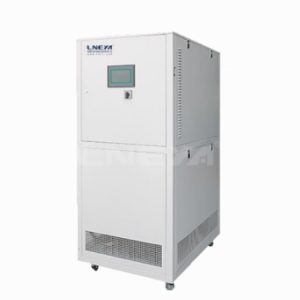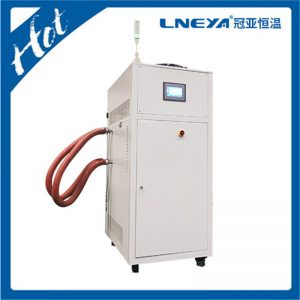Pourquoi y a-t-il un phénomène de gel dans le circulateur du refroidisseur à basse température ?
Many refroidisseur à basse température circulators will frost when they are used, but there is no frost phenomenon in refroidisseur à basse température circulators. So, what’s the matter? Is it related to refrigeration?
First of all, why does the refroidisseur à basse température circulator frost? To find out why there is no frost in the refroidisseur à basse température circulator, it’s better to see why the the refroidisseur à basse température circulator frosts first. Frost is a white crystalline substance of water vapor. When water vapor suddenly encounters a very low temperature object, it will condense frost on its surface.
When the air in the the refroidisseur à basse température circulator meets the inner wall of the the refroidisseur à basse température circulator with lower temperature, it will form frost on its surface. This is the basic reason for the frost in the the refroidisseur à basse température circulator. The frosting of the the refroidisseur à basse température circulator will affect the efficiency of heat exchange, resulting in the decrease of refrigeration capacity, which requires manual removal by users.
Knowing why the cold water cooler circulator frosts, then why not the wind-cooled frost? Is it the opposite? The principle of air-cooled ultra-refroidisseur à basse température circulator is to use air to refrigerate. High temperature air flows through the built-in evaporator. Because of the high air temperature and the low evaporator temperature, the air temperature will be reduced by the direct heat exchange between the two.
At the same time, the cold air is blown into the ultra-low temperature water cooler circulator. The air-cooled ultra-low temperature water cooler circulator reduces the temperature of the ultra-low temperature water cooler circulator through this continuous circulation mode. However, there is always water vapor in the air. When water vapor is cooled, it will condense. So as long as there is heat exchange in the cryogenic water cooler circulator, frost will form. So where did the frost go?
In fact, the air-cooled ultra-low temperature water cooler circulator is not frost-free, but frost condensed on the evaporator. Because it is inside the cryogenic water cooler circulator, we can’t see it directly when we open the door of the cryogenic water cooler circulator, so it is called frost-free.
Recommandations connexes
-
Temperature requirements for pharmaceutical process bioreactors and crystallization equipment
1147The following is a specific explanation of the temperature requirements for both: Temperature requirements for bioreactors: bioreactors are mainly used for biological processes such as fermentation and cell culture, where temperature cont...
Voir les détails -
What are the functions of the controllers for semiconductor temperature control equipment?
794In the temperature control equipment of semiconductor components, each accessory has a different function. Due to the different functions, the function of the temperature control valve and controller of the semiconductor components of LNEYA is dif...
Voir les détails -
Refroidissement de la cuve de réaction en verre
850Chillers are used to cool glass reaction tanks. It is a common practice, especially in situations where precise temperature control is required during chemical reactions. Chillers can provide stable cooling effects to ensure that the tempera...
Voir les détails -
What to consider when purchasing an oil-cooled motor power cooling system?
989Purchasing objects is nothing more than based on several types of methods: inquire with people around you, search and consult on the Internet by yourself, so that you can avoid some detours. 1. Parameter requirements: Ordering from the Internet is...
Voir les détails
 LNEYA Industrial Chillers Fabricant Fournisseur
LNEYA Industrial Chillers Fabricant Fournisseur












